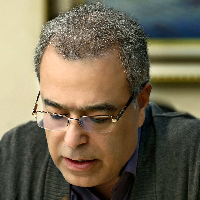Designing a theoretical Framework for the epistemology of place in interdisciplinary studies
Specialization after World War II, led to limited views and weak interdisciplinary communications. Paradigms and expertise, as narrow glasses, ignored wide range of features. This specialization caused some conflicts in the meaning of place, as an extensive and complex concept which is rooted in social, cultural, political, and economic and personality context. This semantic confusion is due to lack of common conceptualization among various disciplines involved. The concept of place plays a central role in planning. To properly understand the concept of place, different views should be considered. Hence, beyond a unique narrative limited to one specific field, this research is to provide a typology of place definitions and a more coherent view in order to develop an interdisciplinary model for understanding this phenomenon. This typology would not be complete and reliable without considering the concept of time. Because place is a dynamic concept which has been historically defined and redefined.
In this paper, based on a qualitative approach and the content analysis methodology, the ontology of place over time was studied. The method of data collection that used in this article is Library resources related to the analysis of the development process and the evolution of the concept of place and examine the interdisciplinary nature of the phenomenon. In the process of this research, the specialized vocabulary of the site and related terms in various fields were searched in the search engine of Scopus. In this research, 25 specialist fields were identified in various fields of philosophy and phenomenology, sociology, environmental psychology, urban economics, human geography, management and politics, cyber technology, environment, urban design and planning with 8031 repetitions. For more precise studies, in each discipline, 5 articles with the highest number of referrals were reviewed in more succinct terms.
In the first step, the vocabularies, concepts and methods related to the “concept of place” have been identified in various fields and disciplines. Philosophy and phenomenology, environmental psychology, human geography, sociology, urban economics, management and policy - making, cyber technology, urban design and urban planning have their own keywords and definitions for the creation of place. Researches indicate that the most useful term in place studies related to the concept of "sense of place" with a total of 2668 repetitions, followed by the concept of "place making" and its derivative compounds with a total of 1,279 repetitions. Of course, the term "place making" also has the greatest effect on composite concepts. In the second step, concepts and definitions were categorized to four "types": place as a set of visual signs, place as a product (the dominant approach before the 1960s), place as a process (the dominant approach between 1960s-1990s) and places as meaning (the dominant approach after 1990s).In "place as a set of visual signs" approach, urban designers and architects have developed various Ways to represent the visual attributes of place. The visual attributes of place are often used as parts of a shared language, which enable designers to differentiate the elements of urban form, for example streets, squares, and buildings. The study of place height, width, depth, proportions, edging, and subdivisions provides a common set of principles for differentiating the visual attributes of place and, in turn, creating “visual excitement”. Considering the concepts presented by scholars and the thematic characteristics of this type, urban design can be considered as the most important field of study in this category of theories.Place as product constitutes the second ontological construct of place. This approach to architecture and city planning attempts to develop archetypes as a rational method of place making. At the close of the twentieth century, a substantial portion of the tenets of postmodern architecture, New Urbanism, and urban design looked at the past to define spatial typologies that have timeless qualities and can be applied as solutions to contemporary urban problems. The product-oriented approach focuses on tangible aspects of place, shorter rather than longer time spans, and a specific type of clientele rather than the entire community’s. Considering the nature of the methodology and the concepts and vocabulary raised in this approach, urban design, urban planning, environment, technology and technical are disciplines that can be considered in this type of theories.The third aspect of the conception of place (place as process) deals with the transformation of place throughout time. Places transform— grow, decline, and are often redeveloped. These processes, among others, reflect the social and political economic forces affecting place, which in turn transform its image. Urban design, environment, economics, sociology, management, and politics are the most important disciplines in this ontology approach.Place as meaning addresses how people perceive the built environment and impart meaning to it. Scholars have been intrigued by the ways in which people assign meaning. Viewing “place as meaning” is highly subjective. Cultural geographers, among others, have attempted to interpret the meaning of place by translating the stories of the collective experience and memory of place. Regarding the range of vocabulary, concepts and methods used in local studies around the meaning of place, disciplines such as urban design, urban planning, philosophy, human geography, and environmental psychology have played the most role in location studies in terms of meaning.
According to what has been said, the concept of place is a multi-dimensional conceptual and different disciplines get involved in the formation of this concept. The typology that is found in concept of place shows a profound change in studying the concept of place: changing from place-based approaches to meaning-based approaches. In order to achieve a common understanding in the epistemological studies of place, an interdisciplinary model was developed. Interdisciplinary nature of urban design and urban planning can be used as an intermediate link between the various disciplines involved in studies of place
- حق عضویت دریافتی صرف حمایت از نشریات عضو و نگهداری، تکمیل و توسعه مگیران میشود.
- پرداخت حق اشتراک و دانلود مقالات اجازه بازنشر آن در سایر رسانههای چاپی و دیجیتال را به کاربر نمیدهد.




